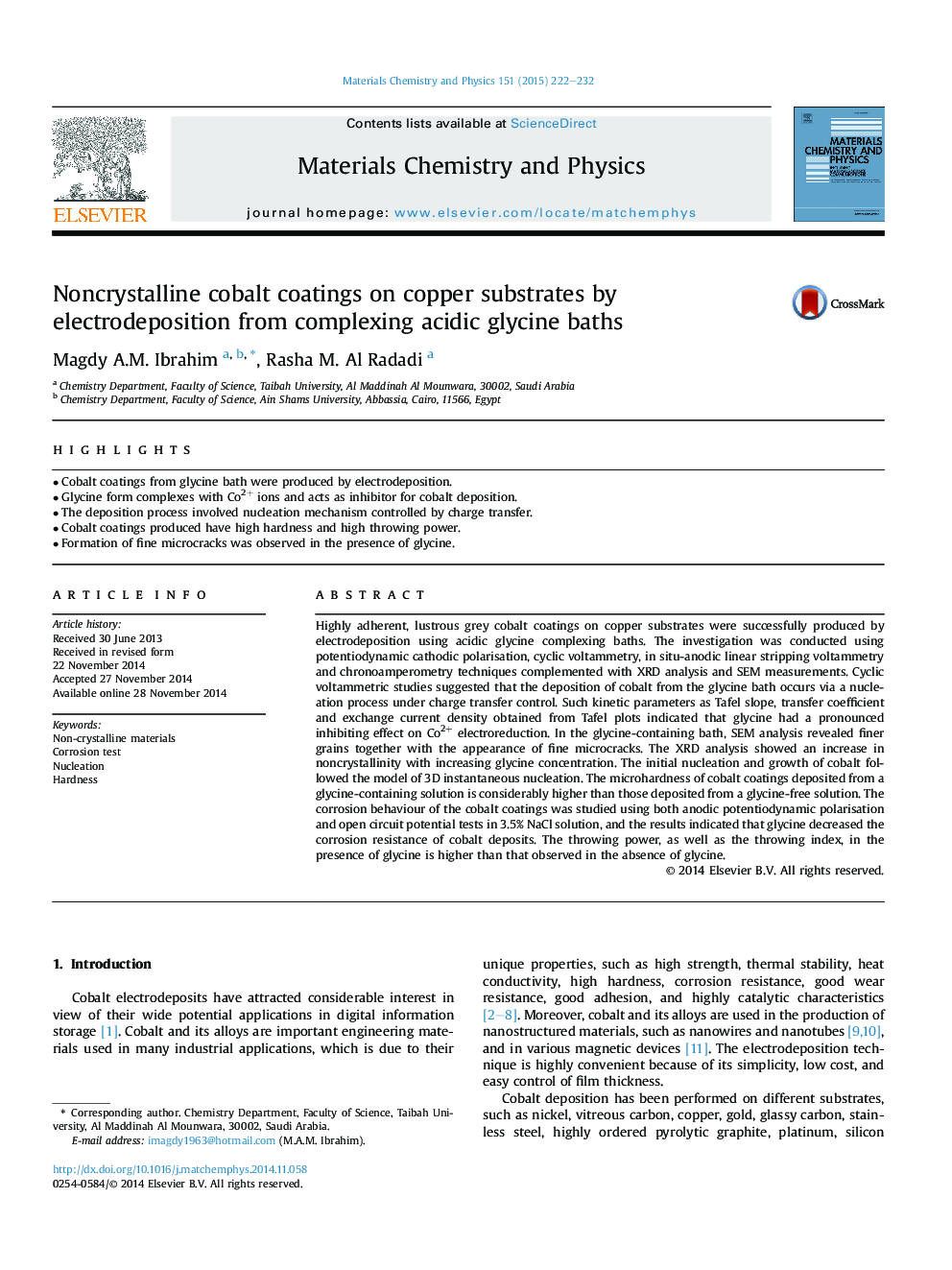| Article ID | Journal | Published Year | Pages | File Type |
|---|---|---|---|---|
| 1521625 | Materials Chemistry and Physics | 2015 | 11 Pages |
Abstract
Highly adherent, lustrous grey cobalt coatings on copper substrates were successfully produced by electrodeposition using acidic glycine complexing baths. The investigation was conducted using potentiodynamic cathodic polarisation, cyclic voltammetry, in situ-anodic linear stripping voltammetry and chronoamperometry techniques complemented with XRD analysis and SEM measurements. Cyclic voltammetric studies suggested that the deposition of cobalt from the glycine bath occurs via a nucleation process under charge transfer control. Such kinetic parameters as Tafel slope, transfer coefficient and exchange current density obtained from Tafel plots indicated that glycine had a pronounced inhibiting effect on Co2+ electroreduction. In the glycine-containing bath, SEM analysis revealed finer grains together with the appearance of fine microcracks. The XRD analysis showed an increase in noncrystallinity with increasing glycine concentration. The initial nucleation and growth of cobalt followed the model of 3D instantaneous nucleation. The microhardness of cobalt coatings deposited from a glycine-containing solution is considerably higher than those deposited from a glycine-free solution. The corrosion behaviour of the cobalt coatings was studied using both anodic potentiodynamic polarisation and open circuit potential tests in 3.5% NaCl solution, and the results indicated that glycine decreased the corrosion resistance of cobalt deposits. The throwing power, as well as the throwing index, in the presence of glycine is higher than that observed in the absence of glycine.
Related Topics
Physical Sciences and Engineering
Materials Science
Electronic, Optical and Magnetic Materials
Authors
Magdy A.M. Ibrahim, Rasha M. Al Radadi,
